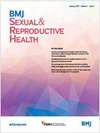性健康服务中病人群体指导的泛伦敦方法:从愿望到现实
Q Medicine
Journal of Family Planning and Reproductive Health Care
Pub Date : 2016-11-29
DOI:10.1136/jfprhc-2016-101621
引用次数: 1
摘要
患者群体指导(PGD)是一种法律机制,允许由指定的授权卫生专业人员向需要治疗PGD中所述病症的明确定义的患者群体提供和/或管理一种或多种特定药物,而无需处方或处方者的指示。使用PGD不是处方的一种形式。2虽然处方仍然是大多数护理的首选选择,2性健康服务多年来一直依赖这一法律机制来供应和管理药物,因为无法及时获得处方者。例如,注册护士或药剂师可向在性健康诊所或社区药房就诊的人提供药物,以进行避孕或其他计划外护理,以进行离散治疗,如紧急避孕或衣原体治疗。虽然护士和药剂师现在可能会接受培训,成为独立的非医疗处方者,但许多服务仍然依赖博士学位来提供服务。2011年以前,伦敦的避孕和性健康服务提供者制定了自己的避孕指导手册。从与服务部门的首席护士和医生的讨论中可以明显看出,由于使用了许多不同的版本,并且需要人力资源定期开发/审查PGDs,因此存在问题。存在护理标准不一致的风险,并且在多个组织雇用的护士必须为不同的PGDs工作时,存在与实践相关的风险。根据当时的计算,每个PGD至少有30个版本。...本文章由计算机程序翻译,如有差异,请以英文原文为准。
A pan-London approach to patient group directions in sexual health services: from aspiration to reality
A patient group direction (PGD) is a legal mechanism1 that allows the supply and/or administration of a specified medicine or medicines, by named authorised health professionals, to a well-defined group of patients requiring treatment for the condition described in the PGD without the need for a prescription or an instruction from a prescriber. Using a PGD is not a form of prescribing.2
Whilst prescribing remains the preferred option for the majority of care,2 sexual health services have been dependent on this legal mechanism to supply and administer medicines in the absence of timely access to a prescriber for many years.
For example, medicines may be supplied by registered nurses or pharmacists to people attending for contraception or for other unscheduled care in a sexual health clinic or in a community pharmacy for a discrete treatment episode, such as emergency contraception or treatment for chlamydia.
Whilst nurses and pharmacists may now train to become independent non-medical prescribers in their own right, many services still rely on PGDs to deliver the service.
Prior to 2011, contraceptive and sexual health service providers in London developed their own PGDs. It became apparent from discussions with lead nurses and doctors within the services that there were problems due to the many different versions being used and the human resource needed to develop/review PGDs on a regular basis. There was a risk of inconsistent standards of care and risks associated with practice where nurses employed in more than one organisation had to work to different PGDs. At that time, it was calculated that there were at least 30 versions of each PGD. …
求助全文
通过发布文献求助,成功后即可免费获取论文全文。
去求助
来源期刊

Journal of Family Planning and Reproductive Health Care
OBSTETRICS & GYNECOLOGY-
CiteScore
0.84
自引率
0.00%
发文量
0
审稿时长
>12 weeks
期刊介绍:
The trading of Professional, Managerial & Healthcare Publications Ltd has been transferred to its parent company, Keyways Publishing Ltd.
 求助内容:
求助内容: 应助结果提醒方式:
应助结果提醒方式:


